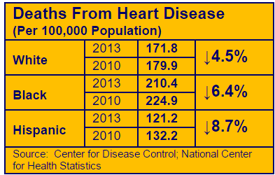According to a study recently published in the Journal of the American Medical Association, older, lower-risk patients undergoing elective PCI can be safely discharged from the hospital the same day as their procedure.
Although hospitals have begun to increase their same-day outpatient PCI rates over the last few years, among selected Medicare patients, same-day discharge is still relatively uncommon. Study investigators observed nearly equivalent rates of mortality and rehospitalization at two and 30 days when compared with patients who stayed overnight.
The study concluded that there are a large number of patients who remain in the hospital overnight after PCI who could safely be sent home the day of their procedure. Data was analyzed for 107,018 Medicare patients 65 years and older who underwent elective PCI and were contained in registries including those of the American College of Cardiology and Society for Cardiovascular Angiography and Interventions. While the registries included many “straightforward” elective cases, more than one-third had a high-risk lesion, 16% underwent multiple vessel PCI and 12% had a bifurcated lesion.
Previous studies have focused on comparing early-discharge rates among patients undergoing PCI have been done outside the U.S. using radial access or single center studies with femoral access and vascular-closure devices. Radial access has generated considerable interest (see CFA’s blog on radial access posted on March 31, 2010) so there was considerable interest on the part of researchers to ascertain whether it was necessary, regardless of access site, for PCI patients to remain in hospital overnight.
The overall prevalence of same-day discharge was 1.25%, and there was significant variation across different centers in the registry. Rates of death and rehospitalization between the two groups were statistically similar. The principal investigator opined that “…we need to get better at stratifying high- and low-risk patients. When we looked at the lower-risk patients in the study, many are remaining in the hospital overnight. In this case, the physician is probably unable to figure out who should go home early, so they keep everybody.”
Treating low-risk PCI patients as same-day outpatients would result in shorter stay, less overhead and less occupancy of a hospital bed. CMS pays for outpatient PCI (defined as less than a 23-hour stay) and has criteria to determine who should stay overnight. Overhead costs would also be impacted by the approach, femoral or radial. The ideal candidate for early discharge is a patient who had successful PCI and does not require prolonged IV medications, prolonged bivalirudin infusion or prolonged monitoring for other reasons. The patient should be ambulatory within six to eight hours and have adequate home support, including ability to return to the hospital in case of emergency. Of interest, the principal investigator’s hospital, Duke, does not discharge patients at night or those who live more than 60 miles away from the nearest hospital.
CFA recommends that hospitals consider same-day outpatient PCI for appropriate patients and evaluate this with their interventional cardiology staff. Included in this discussion and evaluation would be issues of patient selection, risk stratification, femoral/arterial approaches, recovery site and attendant processes, discharge criteria, patient support system post-discharge and the resulting documentation of cost savings and clinical outcomes.
For further information, refer to Rao SV, Kaltenbach LA, Weintraub WS, et al. Prevalence and Outcomes of Same-Day Discharge after Elective Percutaneous Coronary Intervention among Older Adults. JAMA 2011: 306 (October 5, 2011): 1461-1467.
CFA invites your comments, suggestions and questions.

